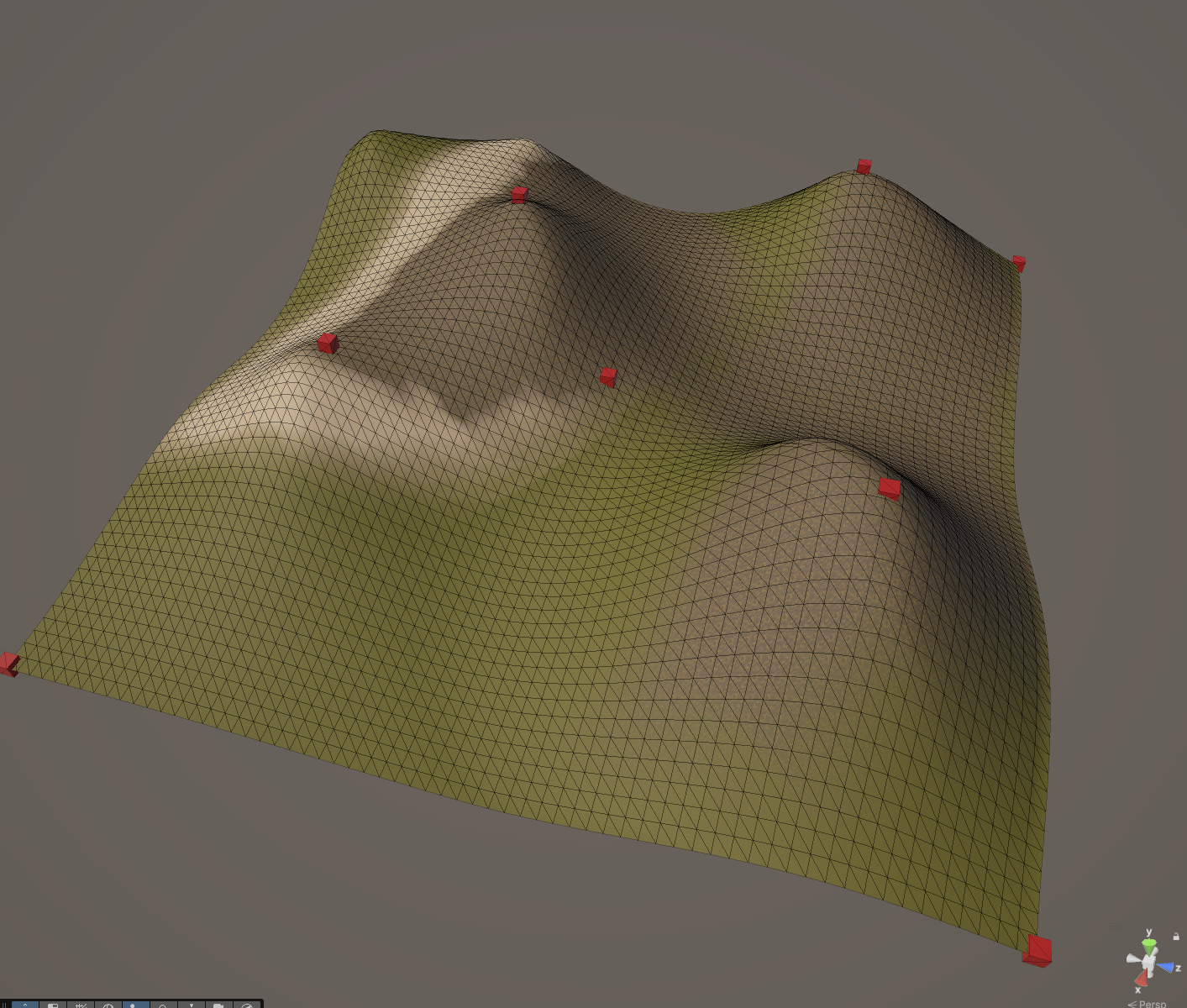Grassworld
Grassworld is a navigable virtual space that is a rolling topography largely covered with grass and little else (the image shows the space at a large distance, without grass, etc. to give you an idea of the contours). The space is designed for a user to navigate through a soundscape that consists of largely two types of sounds 1) rhythmic and drone sounds from natural ecosystems, and 2) mechanical rhythmic sounds and drones from machines. The natural sounds would be found at the higher elevations, and the mechanical sounds at lower elevations. Different topographic features would have different combinations, and of course some mid-height locations would have a combination of the two types of sounds audible at the same time. All sounds will have a lot of high frequency energy, which generally localizes well, and the height differential of the sounds should be apparent when listening within a multi channel ambisonic configuration, or a dolby configuration with overhead speakers.
Ideally the space should be experienced with a projector and a multiple speaker setup in a sound isolated room. Alternatively, a VR headset could be used, or a regular computer with headphones and/or computer game console would be possible if a dedicated room is not possible. Quality sound is the primary technical consideration with this work.
The goal of the piece is to have the user focus on details of spatial hearing rather than strong visual elements (which are avoided). Conceivably, the user could close their eyes and experience all the important aspects of the piece.
To the left is an image of a map of the space - the areas highlighted in Yellow/Brown are areas where crickets, water, and other natural sounds will be placed. In the case of many of these sounds, there will be large numbers of locations where sounds will be placed randomly within the zone, so that the listener is completely surrounded with sounds, much like in a natural setting. Think of a field of crickets surrounding you on all sides. Likewise, the mechanical sounds will be similarly placed, as these are also all reptative scratching, vibrating, buzzing and other similar sounds. These wiill be found in the blue area on the map. The map also shows coordinates for each of the four primary hills in the space. It will take a user about 5 minutes to traverse the space, and the soundscape will dynamically change around them as they approach and leave different sonic areas
Here are a few examples of the insect source recordings in raw form that will be used in the project. The insect sounds will of course be used without the species name, etc. I have roughly 500 of these recordings to draw from.
And here are a few examples of the source recordings in raw form of various mechanical sounds that I will use

